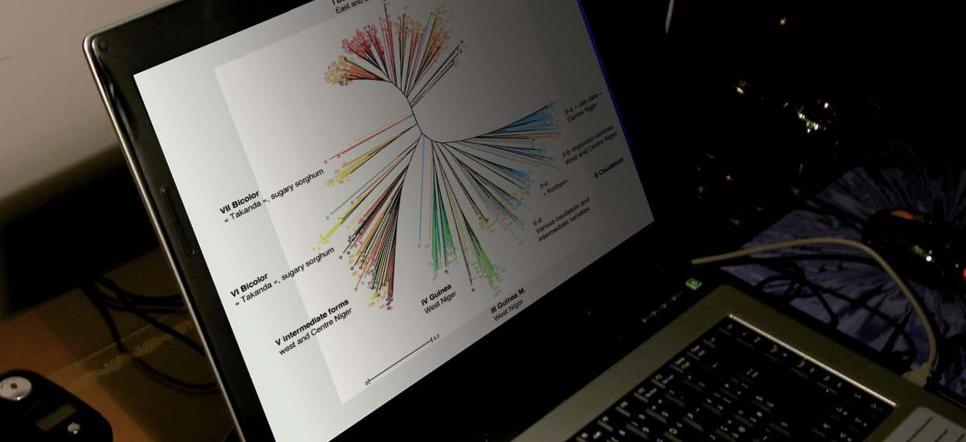Natural sciences are characterized by the vast amount of data they produce: field observations, samples, reference materials, etc. The rapid evolution of computer technology makes it possible to consider using these data at all levels, from the individual researcher or collection to the entire world. However, there are many challenges to overcome.
The first of these challenges is to computerize collections to make the data related to the samples available and allow for better exploitation of these information reservoirs for both research and general societal needs. Many collections, for which this approach has sometimes been initiated for several decades, are already computerized, and their data can be accessed on the internet. For others, the often colossal work remains to be done. The E-ReColNat project aims to catch up for herbaria, especially for MPU and the ALF herbarium of the Cirad.
A second challenge is to enable simultaneous searches across all these independent naturalistic databases with extremely heterogeneous data formats and management systems. To address this, the international Biodiversity Standards (Taxonomic Database Working Group)*, whose congress was hosted by Montpellier in 2010, proposes data exchange standards and formats. Thanks to these standards, the internet portal of the Global Biodiversity Information Facility (GBIF)** offers unique access to a growing number of biodiversity databases.
However, these technical standards, although essential, are not sufficient. It is also necessary to develop common taxonomic reference materials, which is far from a trivial task, given the heterogeneous level of knowledge across taxa and geographic regions. On this front too, international initiatives are attempting, with varying degrees of success, to federate the most commonly used reference materials. For vascular plants (flowering plants, conifers, ferns, and mosses), for example, the portal "The Plant List"***, launched in 2010, brings together nearly 1.3 million scientific names from many regional, national, and international sources.
In France, Tela Botanica (Montpellier) manages a reference material for the flora of France and is responsible for coordinating reference materials for fungi, algae, lichens, and for the flora of French overseas territories on behalf of the Ministry of the Environment.
A final challenge concerns tools that allow individual researchers or amateurs to manage their own data while exchanging with various servers on the internet. The information to be managed can be very diverse: textual data, maps, and especially photos. With digital technology, photos are easy to take and their number explodes. The ways in which they can be valued are diversifying: participatory identification, image recognition, etc.
In the field of botany, Pl@ntNet was created to meet these challenges. Among the main ongoing achievements are a data manager that facilitates the production, sharing, and aggregation of data of all types on plants, as well as automatic or assisted identification tools, collaborative information validation, etc.
Large quantities of heterogeneous data can also be produced and managed collaboratively through wikis. This is the case for the Pl@ntUse project, a Pl@ntNet case study dedicated to useful plants, which benefits from the functionalities of the Mediawiki engine.


